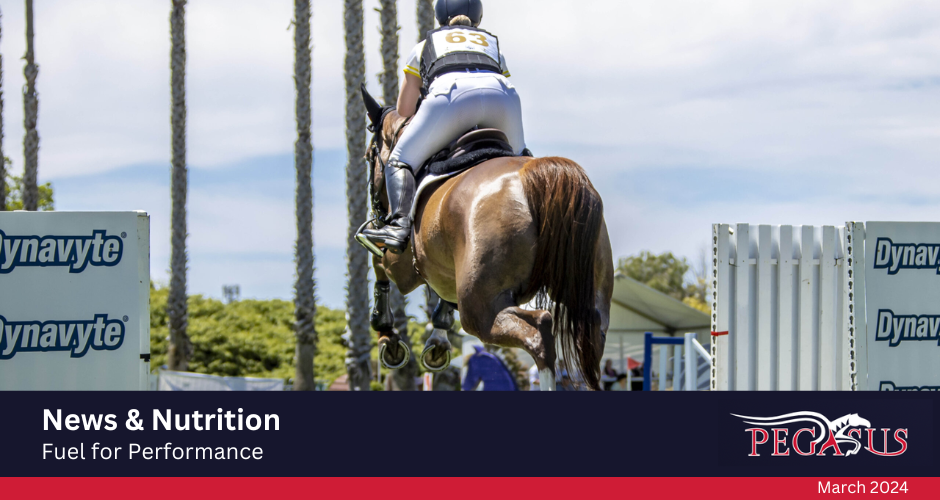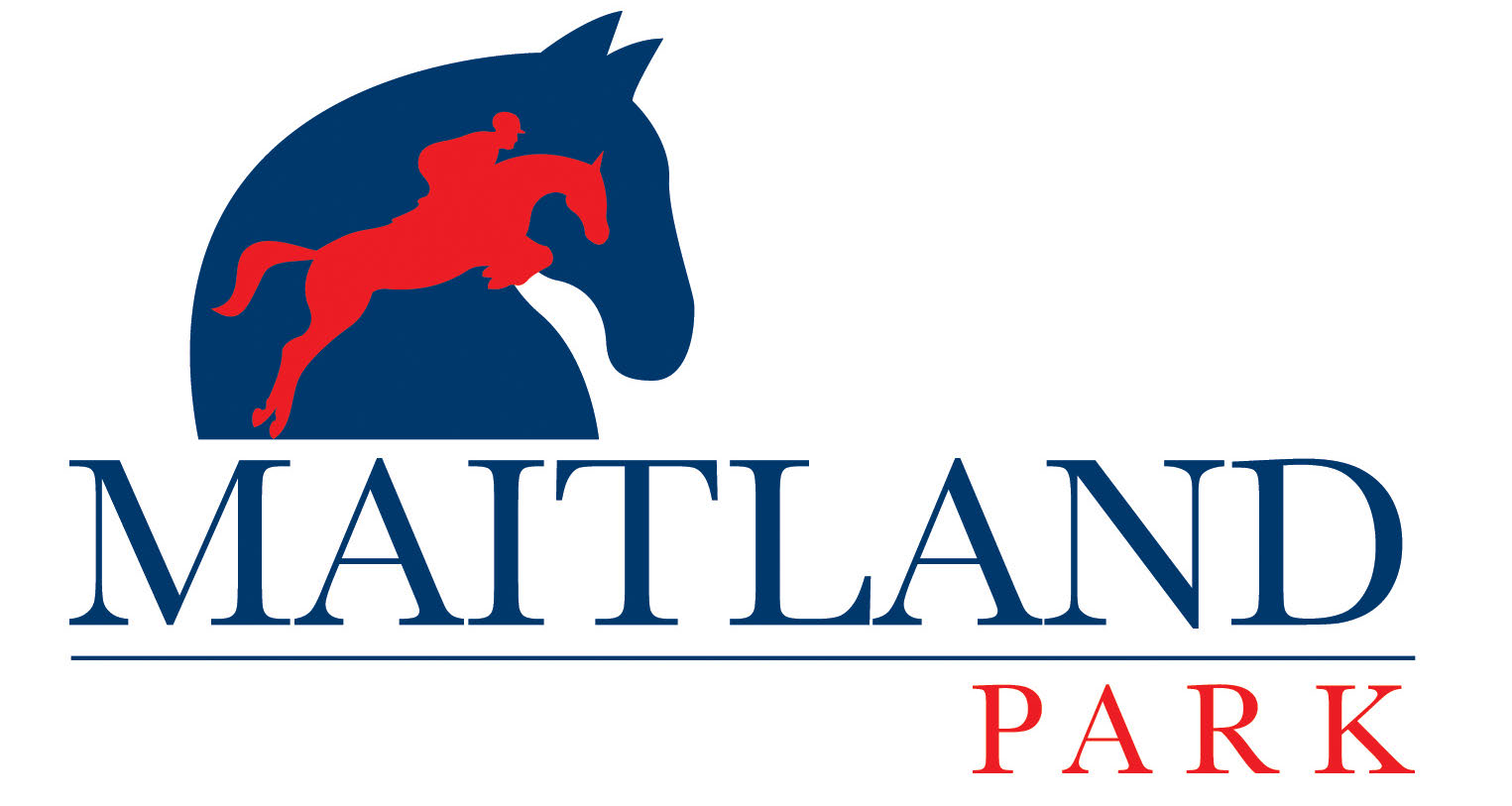
Pegasus News & Nutrition - Fuel for Performance
There are many different fuel sources to supply the energy necessary for horses in performance work. Which type of energy source, and how much of it is required, will depend heavily on the individual horse (its body type, metabolism, temperament, size etc.), its workload, and the type of athletic exercise that we are asking of it. This often involves a balance between athletic performance and behaviour. Here we take a look at the different feeds/fuel sources and their suitability for different types of performance horses.
Energy for Horses
Energy is the power to do work. Horses require energy (calories) in the diet to maintain bodily functions, to do the work we ask of them, and to maintain or increase body condition. How much energy a horse requires depends on a number of factors, as mentioned above, and therefore one of the key factors for maximising not only performance, but also our feed budgets, is to correctly match the fuel source with the type of performance activity. To put it simply – energy input vs energy output. Research conducted by Kentucky Equine Research estimating digestible energy (DE) requirements for horses found that the amount and source of energy required is affected by:
1. The duration of exercise
2. The intensity of exercise
The summary of findings was that horses in lower intensity exercise require a high fat, high fibre, low NSC diet, whilst those in higher intensity exercise require a diet with moderate fat, moderate fibre, and higher NSC levels.
Energy Pathways in Exercise
Energy in the horse is generated from blood glucose, muscle glycogen and fat. During low-intensity work, muscles convert glucose to energy using oxygen, called aerobic work. This uses slow-twitch muscle fibres and can be sustained over long periods of time. When it comes to high-intensity exercise, the muscles use glycogen quickly and at a rate that exceeds aerobic energy capacity. To meet the demands of intense exercise, glucose must be converted to energy without using oxygen – anaerobically. This produces energy quickly, but can only be sustained for a short period of time. It supports fast-twitch muscle fibres used for fast exercise, such as galloping. Whilst the horse is designed to meet most of its energy needs from fibre, typically, roughage alone cannot provide adequate energy to support high-performance exercise.
Types of Fuel
Fuel sources for horses consist of carbohydrates, fats, and proteins. Carbohydrates are the most common and abundant source of energy and can be further broken down into 2 groups: starches and sugars (mostly from grain and some hays), and fibre. These two groups are sometimes referred to as non-structural carbohydrates (NSC) and structural carbohydrates (SC) respectively. Both these sources come from plant content and have different digestion and utilisation. The inner parts of the plant cell make up the NSC, while the outer shell/cell wall of the plant is the SC.
Grains, such as oats and barley, are the main source of starch in the diet for horses. Generally, the higher the starch content of the grain, the lower the fibre content. Grains can be a useful fuel source for horses in high-performance work, however, there is a limit to the amount of starch that can be digested in the small intestine, due to the rapid rate of passage. Excess starch can pass into the hindgut and cause a decrease in pH, and subsequent microbial imbalance. Therefore, to feed grain safely in the diet, it is best to split meals into smaller amounts and ensure no more than 2.5kg of grain per meal. Choosing a grain with higher digestibility, or one that has been processed to improve digestibility, is also a good approach.
Fibre is a useful energy source for the horse. It is fermented in the hindgut to produce volatile fatty acids (VFA) for energy. This fermentation process continues during exercise, travel and time away from feed and provides a consistent supply of slow-release energy. Different fibre sources contain different levels of sugar (water soluble carbohydrates [WSC]) which contribute to the total NSC composition in the diet. In some cases, where a diet low in NSC is required, a hay with lower WSC content may be most suitable. Likewise, pasture contains long-chain sugars known as fructans. During times of the year when fructans are high, the sugar contribution from pasture also needs to be considered and the diet adjusted accordingly.
Fats can also be a useful form of slow-release energy sources for horses. The metabolic process of converting fats to energy is relatively slow, and therefore this fuel source is particularly suited to horses doing long, slow work, such as endurance. Not only are fats great for putting shine on your horse’s coat, they are also energy dense – 1 cup of oil contains about 3 times the amount of energy as the same quantity of most grains. Fats have a lower glycaemic index than grain-based feeds and can also help to reduce the glucose response to a grain meal by slowing the rate of passage through the foregut. They are also known for their ‘glycogen sparing’ effect, as the horse will first utilise energy from fats before tapping into stores of muscle glycogen. There is, however, a limit to how much fat can be included in the diet and the horse’s GIT requires time to adjust. Therefore, rather than making up the majority fuel source in the diet, they are usually combined with fibre fuel sources where a diet low in NSC is desired, or used as a useful energy ‘top up’ in grain-based diets.
Protein is the least efficient form of energy for horses. Whilst horses can convert protein to energy, the process is not the most efficient, and therefore horses mainly rely on carbohydrates and fats and as the principal fuel sources.
How does this all relate back to choosing the right fuel for our horses?
Horses doing low-intensity exercise, such as lower levels of dressage, pleasure riding, lower levels of jumping and trail or endurance riding, are generally suited to a diet consisting of fibre and fats, with a lower NSC content. Horses in higher performance work, such as higher levels of dressage, showjumping, higher level eventing and racing, are generally suited to a diet of moderate fat and fibre levels, and a moderate NSC content to help fuel that exercise and assist with replacing muscle glycogen stores. Obviously, there are exceptions based on the individual. For example, a high-performance horse that was prone to laminitis or tying up would require a careful balance of NSC to fuel exercise without exacerbating these conditions. In these cases, seeking the assistance of an equine nutrition advisor is the best way to ensure a suitable feeding regime.
Article by Pegasus Feeds, 26.09.2023
For further Pegasus News and Nutrition articles, click here.










